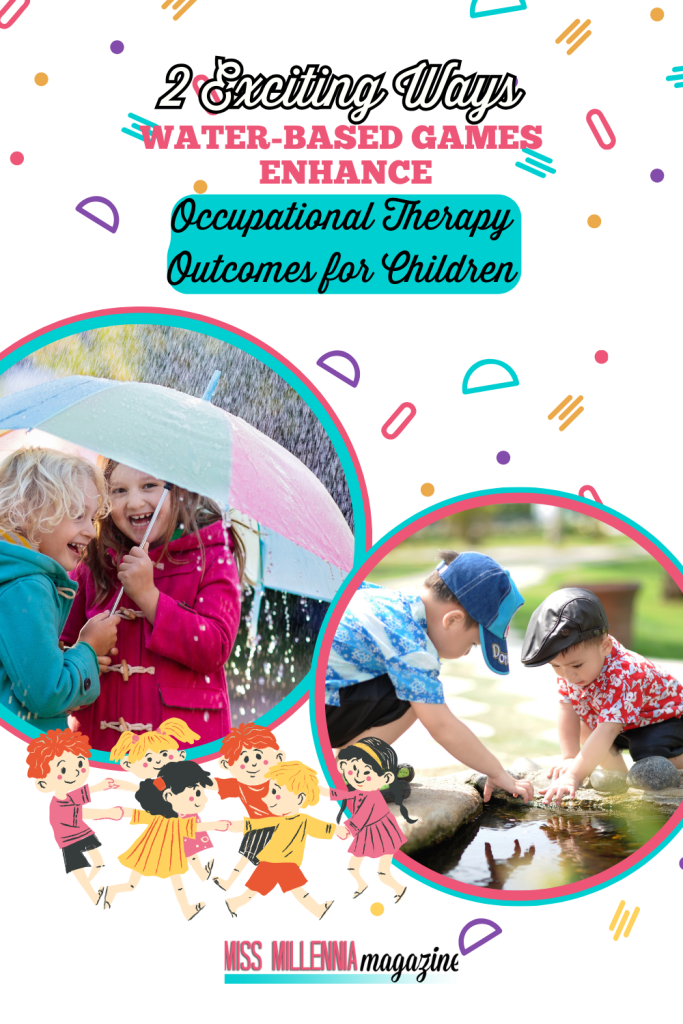2 Exciting Ways Water-Based Games Enhance Occupational Therapy Outcomes for Children
Water play is an inventive and engaging method employed in occupational therapy to assist children with various developmental challenges. As an inherently playful and fun task, water-based activities offer a sensory-rich environment that can foster the growth of fine and gross motor skills, social interaction, and emotional development. Incorporating water play into a therapy routine allows therapists to work on a child’s neurodevelopment in a setting that encourages intrinsic motivation and enjoyment.
Water-based activities are a valuable complement to activities for occupational therapy conducted by professionals or parents at home that influence the development of motor skills and sensory integration in individuals with diverse needs. Water can be transformed into a therapeutic tool by adding typical objects such as toys, ice, or different textures, making activities adaptable for individual therapy goals. By immersing children in water activities within occupational therapy, they receive the unique benefits of aquatic elements like resistance and buoyancy, which can enhance balance and coordination. These elements provide a natural resistance that can challenge and strengthen a child’s muscles in a low-impact, playful setting.
Key Takeaways
- Water play supports motor skills and sensory experiences.
- Therapeutic goals will incorporate fun, water-related activities.
- Safety and appropriate practices ensure effective water play in therapy sessions.
Integrating Water Play into Occupational Therapy

Water play is a dynamic tool within occupational therapy that facilitates children’s motor skills development and sensory processing. By engaging in various water activities, children experience a combination of fun and therapeutic benefits.
Water Play Activities and Motor Skills Development
Incorporating water play into occupational therapy can significantly boost motor skills in children, including toddlers, preschoolers, and infants. Activities using a water table or sensory bin are enjoyable and crucial for enhancing gross and fine motor skills. For instance:
- Gross Motor Skills: Splashing and scooping water can improve core strength and balance, while activities like pouring develop coordination.
- Fine Motor Skills: Tasks such as picking up sponges or pinching to use scoops work on the precision and skill required for daily tasks.
Sensory Benefits and Cognitive Enhancements
The sensory experience of water play extends beyond just touch and smell, incorporating various textures and temperatures. This kind of sensory input is vital for the vestibular system and proprioception, essential components of sensory processing:
- Proprioceptive Input: Lifting and carrying different weights of water enhances proprioceptive senses, which can lead to better emotional regulation and relaxing effects.
- Cognitive and Social Skills: Water play also presents numerous opportunities for problem-solving, focus, and concentration. Additionally, as children engage in these activities, they often work alongside peers, bolstering social skills and communication, including language development.
Through thoughtfully designed water play activities, occupational therapists can create a therapeutic environment that nurtures child development in a multi-faceted way.
Safety, Accessibility, and Best Practices

When incorporating water-based games into pediatric occupational therapy, ensuring safety, providing accessible environments, and adhering to best practices are paramount. These foundational elements support the therapeutic goals of enhancing core strength and motor skills in a fun and engaging manner.
The Role of Therapists and Parents in Water-Based Intervention
Occupational therapists and parents play a crucial role in safely executing water-based interventions. Therapists must conduct assessments to determine the appropriate weight and resistance levels for each activity, ensuring that games like tossing water balloons or running through a sprinkler offer suitable challenges without compromising safety. They must communicate effectively with children and their families, creating customized activities that can be safely replicated on a hot summer day under parental supervision.
- Safety: Verify all games are age and ability-appropriate, ensuring constant supervision.
- Communication: Therapists should provide clear instructions and maintain open dialogue with families to facilitate ongoing safety and comfort.
On the other hand, parents are tasked with continuing therapeutic practices in the home environment, often requiring adaptation of activities for different settings. For example, a parent might set up a light sprinkler system for a child on a hot summer day that encourages motor planning and coordination while maintaining vigilance to prevent slips or overexertion.
- Supervision: Parents must always supervise water activities and be ready to intervene if necessary.
- Environment: Adapt home environments, like the backyard or patio, into safe play areas.
Adapting Water Activities for Different Needs and Environments
Adaptation and accessibility are essential in modifying water activities to cater to various abilities and environments. A pediatric occupational therapist should employ strategies to adjust the level of water resistance to match the child’s core strength, sometimes using tools like water noodles or foam dumbbells. Therapists create an inclusive setting that accommodates various physical needs by modifying the aquatic environment’s depth, temperature, and turbulence.

- Accessibility: Ensure all children can participate by adjusting activities to individual abilities.
- Adaptation: Tailor the water’s properties and use supportive devices for successful participation.
The activities can be scaled down in different environments, such as smaller pools or bathtubs. For example, on a hot summer day, a child might engage in a game of catch with a water-soaked sponge instead of a water balloon if weight and physical capacity are considerations. By adapting these games, water-based therapy remains fun but also beneficial and inclusive, supporting children’s journey towards improved function and independence.
- Core Strength: Activities should be chosen to target and improve core muscle development.
- Environment: Activities like public pools or home bathtubs should be tailored to suit the available space.
Conclusion
Water-based games significantly enhance children’s occupational therapy, offering an enjoyable platform for skill development. They provide a multisensory experience that augments traditional therapeutic approaches. Research supports that incorporating these games into therapy could increase children’s motivation and sustained engagement. Therapists are encouraged to consider these playful interventions as a means to support therapeutic goals in a child-friendly manner.









